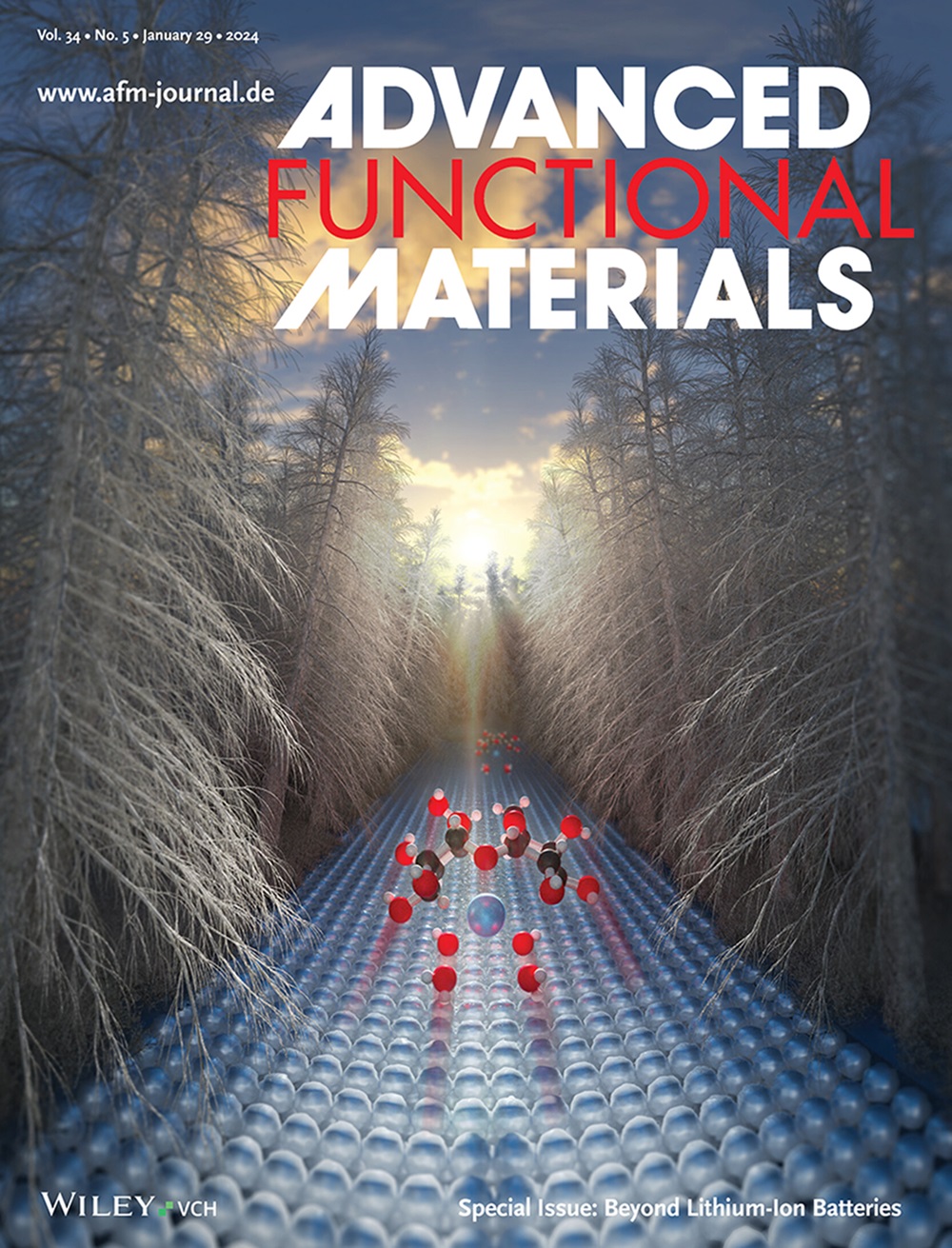Synergistic Effects of Entropy Tuning in Niobium‐Based Oxide Anode for Fast‐Charging Lithium‐Ion Batteries
IF 19
1区 材料科学
Q1 CHEMISTRY, MULTIDISCIPLINARY
引用次数: 0
Abstract
The development of fast‐charging lithium‐ion batteries requires electrode materials with both high‐rate capability and excellent durability. Here an entropy‐tuned niobium‐based oxide (ETNO) anode is introduced, strategically engineered through multi‐cation doping by incorporating Nb快速充电锂离子电池中铌基氧化阳极熵调谐的协同效应
快速充电锂离子电池的发展需要具有高倍率性能和优异耐用性的电极材料。本文介绍了一种熵调谐的铌基氧化物(ETNO)阳极,通过将Nb5+, Ti4+, W6+, Fe3+和Ca2+掺入氧化铌的Wadsley - Roth剪切结构,策略性地设计了多阳离子掺杂。ETNO表现出高倍率的能力,在20.0 A g - 1时提供171 mAh g - 1,并且在极端快速充电条件下,在9000次循环后保持79%的初始容量。X射线衍射(XRD)和operando拉曼光谱显示,熵的调整使得(去)锂化过程中逐渐发生结构转变,有利于稳定的相演化和最小化应变。计算分析证实,熵调谐增强了Li离子扩散,减少了带隙能量,减轻了体积膨胀,共同提高了电化学性能。用LiNi0.8Mn0.1Co0.1O2 (NMC811)阴极进行的全电池测试验证了ETNO的实际可行性,显示出卓越的循环稳定性和高容量保持。本研究确立了熵调整作为下一代高功率锂离子电池阳极的一种强大设计策略,可提供卓越的快速充电能力和耐用性。
本文章由计算机程序翻译,如有差异,请以英文原文为准。
求助全文
约1分钟内获得全文
求助全文
来源期刊

Advanced Functional Materials
工程技术-材料科学:综合
CiteScore
29.50
自引率
4.20%
发文量
2086
审稿时长
2.1 months
期刊介绍:
Firmly established as a top-tier materials science journal, Advanced Functional Materials reports breakthrough research in all aspects of materials science, including nanotechnology, chemistry, physics, and biology every week.
Advanced Functional Materials is known for its rapid and fair peer review, quality content, and high impact, making it the first choice of the international materials science community.
 求助内容:
求助内容: 应助结果提醒方式:
应助结果提醒方式:


